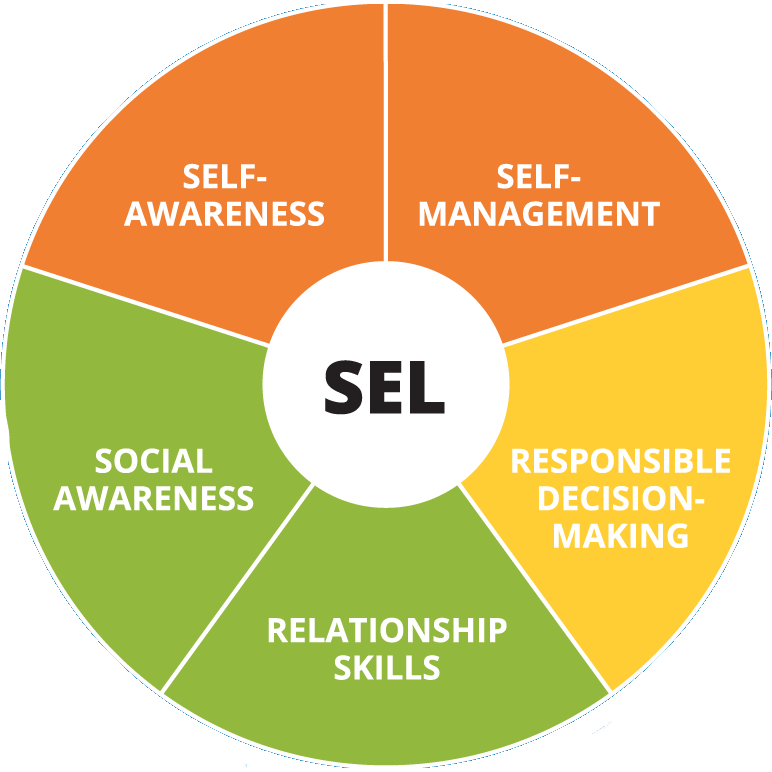BPS District Social Emotional Learning Book
SEL-Competencies
Social and emotional learning (SEL) enhances students’ capacity to integrate skills, attitudes, and behaviors to deal effectively and ethically with daily tasks and challenges. There are five core competencies that can be taught in many ways
across many settings. Many educators and researchers are also exploring how best to assess these competencies.
The ability to accurately recognize one's own emotions, thoughts, and values and how they influence behavior. Te ability to accurately assess one's strengths and limitations, with a well-grounded sense of confidence, optimism, and a "growth mindset."
Indicators- IE Identifying Emotions
- RS Recognizing Strengths
- SCE Self-Confidences & Efficacy
- ASP Accurate Self-Perception
The ability to successfully regulate one's emotions, thoughts, and behaviors in different situations effectively managing stress, controlling impulses, and motivating oneself. The ability to set and work toward personal and academic goals.
Indicators- IC Impluse Control
- SM Stress Management
- SD Self-Discipline
- S-M Self-Management
- GS Goal Setting
- OS Organizational Skills
The ability to take the perspective of and empahtize with others, including those from diverse backgrounds and cutures. The ability to understand social and ethical norms for behavior and to recognize family, school, and community resources and support.
Indicators- HS Help Seeking
- EPT Empathy & Perspective Taking
- AD Appreciating Diversity
- RFO Respect for Others
The ability to establish and maintain healthy and rewarding relationships with diverse individuals and groups. The ability to communicate clearly, listen well, cooperate with others, resist inappropriate social pressure, negotiate conflict constructively, and seek and offer help when needed.
Indicators- C Communication
- SE Social Engagement
- RB Relationship Building
- TW Teamwork
- CR Conflict Resolution
The ability to make constructive choices about the personal behavior and social interactions based on ethical standards, safety concerns, and social norms. The realistic evaluation of consequences of various actions, and a consideration of the wellbeing of oneself and others.
Indicators- IP Identifying Problems
- AS Analyzing Situations
- SP Solving Problems
- E&R Evaluating & Reflecting
- ER Ethical Responsibility






